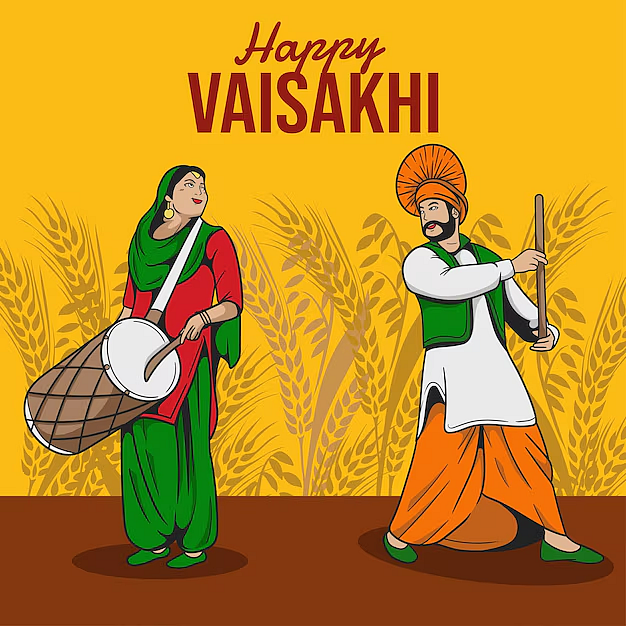Baisakhi is most vibrantly celebrated in Punjab, a northern region of India, due to its deep ties to the Sikh community. Baisakhi marks the Sikh New Year and the harvest season. Apart from holding religious significance, it is a celebration of culture, community, and heritage characterized by various cultural traditions that have been passed down through generations. For those eager to learn more about this vibrant festival, let라이브 바카라 know about the colorful customs that make Baisakhi a joyful and unforgettable event.
The Historical and Religious Significance of Baisakhi
Baisakhi holds a special place in Sikh history as it commemorates the founding of the Khalsa Panth by Guru Gobind Singh in 1699. On this day, Guru Gobind Singh Ji gathered his followers at Anandpur Sahib and introduced the concept of the Khalsa, a community of devout Sikhs committed to righteousness and service. This momentous event is celebrated with great reverence at Gurdwaras worldwide.
For Hindus, Baisakhi signifies the beginning of the solar new year and is associated with the harvest season. It is also believed to be the day when Goddess Ganga descended to Earth, making it an auspicious occasion for taking holy dips in rivers such as the Ganges.
Gurudwara Rituals and Nagar Kirtan
Sikhs observe Baisakhi with religious fervor by visiting Gurdwaras, where special prayers and kirtans (hymn singing) are organized. One of the key rituals includes listening to the recitation of the Guru Granth Sahib, the holy scripture of Sikhism. Many devotees participate in Nagar Kirtans, grand processions led by the Panj Pyare (Five Beloved Ones) carrying the Sikh flag, the Nishan Sahib. These processions, accompanied by devotional music and martial arts demonstrations (Gatka), create a spiritually uplifting atmosphere.
Baisakhi Melas: A Carnival of Cultures
Baisakhi Melas in Punjab are vibrant celebrations that encapsulate the spirit of the festival, featuring a rich tapestry of traditional folk music and dance like Bhangra and Gidda, spirited competitions including wrestling, tug-of-war, and bullock cart races, a delightful array of handicraft and food stalls showcasing Punjabi delicacies such as Makki di Roti, Sarson da Saag, Lassi, and Jalebi, and engaging puppet shows and street plays that narrate historical and cultural stories, all coming together to foster a sense of community and celebrate life's abundance.
Folk Music and Dance: The Heartbeat of Baisakhi
Baisakhi will not be complete without the popular sound of the Giddha and Bhangra, Punjabi folk dances that shine a colorful Punjabi Life to the world. Giddha, a dance form for women only, features graceful movements and fast clapping. Men's Bhangra dance form is expressed through energetic leaps, fast pace, and a lot of footwork. This invigorating dance is always accompanied by delightful music, thereby becoming the channel of expressions, celebrations, and fun without boundaries of age and gender. Traditional folk songs celebrating the spirit of Baisakhi are sung with great fervor, adding to the festival's electrifying atmosphere.
Community Langar: Culinary Delights
The essence of Baisakhi lies in selfless service, vividly expressed through the Langar tradition. As Baisakhi nears, Sikhs unite to prepare Langar with dedication and teamwork. People donate fresh ingredients as per their capacity to contribute to acts of community service. The significance of this custom lies in the emotion of kinship that people hold while volunteering to facilitate the whole process, from the preparation of food to the cleaning of the utensils. This tradition, being more than just reinforcing the value of equality and compassion between individuals, reinforces the role of shared responsibilities and caring for one another, creating an atmosphere of unity and acceptance within the community.
Dressing: Colors of Celebration
Baisakhi attire is a vibrant expression of Sikh cultural identity, featuring prominent saffron and orange hues symbolizing sacrifice and spirituality, alongside blue representing the Khalsa and the universe's expanse; the celebration's joyful spirit is further reflected in bright, vibrant colors worn by both men and women, who typically don traditional Punjabi clothing such as kurtas, pajamas, and turbans for men, and salwar kameez or lehengas for women, all in colorful fabrics.
Turban Tying
In the context of Sikhism, dastaar, or turban enjoys the very high status of both cultural as well as religious nature and is an irreplaceable symbol of Baisakhi celebrations. For Sikh men and boys, it is a symbol of commitment to their religion and on this holy day, they wear their turbans with pride showcasing their heritage. If you happen to visit the state of Punjab during Baisakhi celebrations, you will not miss the colorful variety of these head coverings tied in different styles.
The turban tying competition is a frequently organized activity at various venues where the participants display their abilities in graceful draping and styling of the turban. Beyond being a badge of pride and identity, the turban is a reflection of values like respect, bravery, and honesty that form the foundations of Sikh tradition and heritage.
Ritual Bathing
Another sacred tradition observed during Baisakhi is the ritual bathing at historic gurdwaras or sacred rivers, symbolizing spiritual purification and renewal. Devotees gather in large numbers to take a dip in the holy waters, seeking blessings and forgiveness while reaffirming their commitment to Sikh principles and values. This act of cleansing not only purifies the body but also rejuvenates the soul, fostering a sense of spiritual awakening and enlightenment.
Baisakhi is more than just a festival; it is a celebration of heritage, unity, and gratitude. The blend of religious devotion, cultural vibrancy, and community togetherness makes it a truly remarkable occasion. Whether through spiritual rituals, energetic dances, or delicious feasts, Baisakhi continues to be a festival that brings people together in a spirit of joy and prosperity.
So, this Baisakhi, embrace the traditions, dance to the dhol beats, and cherish the rich cultural heritage that makes this festival so special!
Follow 바카라 Experiences:
| | |















